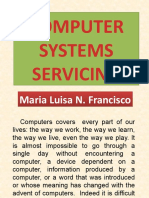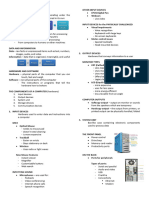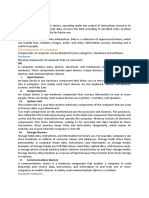0% found this document useful (0 votes)
54 views3 pagesTechnology Unit 1 Summary
The document describes 10 different types of computers: personal computers, desktops, laptops, netbooks and tablets, handheld computers, workstations, servers, mainframes, supercomputers, and wearable devices. It provides brief descriptions of each type of computer and their typical uses and hardware configurations. Measurement units for data storage sizes are also defined, ranging from bytes to petabytes. Finally, some common types of software licenses are outlined, including public domain, open source, copyleft, and proprietary licenses.
Uploaded by
ninadottavio.mCopyright
© © All Rights Reserved
We take content rights seriously. If you suspect this is your content, claim it here.
Available Formats
Download as PDF, TXT or read online on Scribd
0% found this document useful (0 votes)
54 views3 pagesTechnology Unit 1 Summary
The document describes 10 different types of computers: personal computers, desktops, laptops, netbooks and tablets, handheld computers, workstations, servers, mainframes, supercomputers, and wearable devices. It provides brief descriptions of each type of computer and their typical uses and hardware configurations. Measurement units for data storage sizes are also defined, ranging from bytes to petabytes. Finally, some common types of software licenses are outlined, including public domain, open source, copyleft, and proprietary licenses.
Uploaded by
ninadottavio.mCopyright
© © All Rights Reserved
We take content rights seriously. If you suspect this is your content, claim it here.
Available Formats
Download as PDF, TXT or read online on Scribd
/ 3



















































































